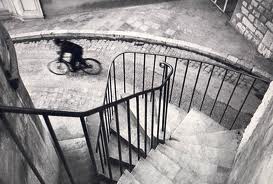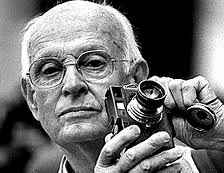Let’s See What Develops: Photography
Skip the B.S.
by Skip Eisiminger
“A new industry [photography] has arisen which contributes much to confirming stupidity in its faith and to ruining what might have remained of the divine in the French genius.”—Charles Baudelaire
“[Photographs] are magic things that traffic in mystery. They float on the surface, yet they have a strange life in the depths of the mind. They bear watching.”—Lance Morrow
CLEMSON South Carolina—(Weekly Hubris)—11/7/11—Some claim that the Shroud of Turin is the world’s first photograph, created when a burst of light transfigured the body of Jesus and left his negative image on the linen.
“Photograph,” however, did not exist in any language until the early 19th century. In 1824, the French photographer Joseph Niépce called the new medium “heliography,” or “writing with sunlight.”

A short time later, in England, William Henry Fox Talbot coined “photogenic drawing,” or, “a picture born of light.”
Then in 1839, Sir John Herschel used “photography,” or, “writing with light,” before the Royal Society, and it stuck.
As these word histories remind us, light is the catalyst in recording the visual, whether it comes from the sun or burning magnesium which, in the early days, not only illuminated the subject but sometimes ignited the photographer’s hair.
One of the interesting ironies in precipitating a picture with light is that it will last longer if it’s kept in the dark.
The older I get, the less I wish to be circumscribed by a rectangle of time I don’t recognize and, when I do, I don’t like.
Apparently, I’m not alone. At age 99, Sigmund Freud’s mother complained that her pictures in the newspaper made her look a hundred. The Amish and some Orthodox Jews refuse to be photographed at all because of the Bible’s injunction against making “a likeness of anything” lest they or someone else make the mistake of worshipping these icons. No point in taking any chances, they say, regardless of how unphotogenic they might be. Some aboriginals refuse to be captured on film because the process strips the self of its natural protection. Anthropologists find that hard to argue against when they’re holding evidence in their hands.

Henri Cartier-Bresson (http://en.wikipedia.org/wiki/Henri_Cartier-Bresson), one of the finest photo-journalists of the last century, said that the camera was “a combination of the psychiatrist’s couch, a machine gun, and a warm kiss.” On another occasion, he called the device “a Geiger counter.” Permit me to borrow these four analogies as a rough outline for my further ramblings.
First, the psychiatrist’s couch.
When photography studios opened by the hundreds across Europe and America in the late 19th century, the first and often the only thing people wanted written in light was an image of themselves to pass along to their children and grandchildren. It’s no wonder; few could afford an oil portrait or a copper engraving, and the silhouette was a simplified likeness in which almost everyone had a strong chin and a noble brow. With the camera, though, immortality was democratized.
More to the psychological point, my sister once sent me a photograph that a stranger had taken of her family arrayed beside and across an armored personnel carrier. The four were visiting Ft. Jackson, where the younger son had just graduated from basic training. Sadly, at the time, my sister and her husband were tied up in some nasty divorce proceedings, but they had set aside their differences for that “Kodak moment.” When I saw the photograph, it fell to this photo-shrink to expound upon its meaning. It’s really quite involved, but suffice it to say that my sister had her arms around her two boys on the APC, while the alcoholic husband stood alone on the ground.
Second, a machine gun.
If you doubt the roadhouse-right impact a photograph often has, take a look at Kevin Carter’s famed picture of the starving Sudanese orphan in the fetal position being surveyed by a vulture.
Cartier-Bresson surely had a picture like Carter’s in mind when he made the gun-camera connection. Not long after Carter took his Pulitzer-Prize winning picture and shooed the bird away in tears, he committed suicide. The stiletto shaft of light that entered the aperture of his camera passed through the lens, the film, the metal case, and into his brain. Every time the picture was mentioned, he was reminded that he had spent 20 minutes framing the shot and neglecting to help the child to the refugee center.
Third, a warm kiss.
Greta Garbo’s film career began with a love affair but, as she aged, she said the camera had become a “predator.”
There’s no question about the seductive and voyeuristic appeal of iconic film, whether moving or still. In Garbo’s case, she often seemed more alive and tangible on the screen than she did dodging around New York in a kerchief and sun glasses trying to avoid the stalkerazzi. What she feared, I suspect, was something Sony introduced in 1998—a video camera equipped with a $7 infrared filter which peers through people’s clothing.
Perhaps the ultimate “warm kiss” that a camera can bestow is what ecologists have dubbed “eco-porn.” These are photographs of the Grand Tetons, for example, taken with “provocative lighting,” that attempt to seduce the viewer into saving them at the expense of more “flat-chested” landscapes.
Finally, the Geiger counter.
Surely this figure addresses photography’s ability to take the invisible measure of a subject. It’s like a nurse taking your blood pressure and pronouncing your heart fit.
Two examples come to mind: one is the photograph of a South Vietnamese general summarily executing a suspect on the streets of Saigon, and the other is of American soldiers and a Vietnamese girl fleeing down a country road, terrified by a napalm explosion that has burned off the child’s clothes. Both of these pictures were taken and sent around the world in 1968, the year many historians say the majority of Americans quit supporting the war. Vietnam was suddenly radioactive, and the camera, more than anything else, had documented the lethal ticking.
In praising photography, I’m forced to admit the shortcomings of my own preferred medium: writing.
Frankly, there are some things words cannot imbue with agency. I grew up with a father who developed his own photographs and smoked three to four packs a day. My mother smoked a pack every couple of days. Until I left home at 17, I felt as if I were living in a Midas muffler—quiet and smoky. About 1967, near the time that the Surgeon General issued his famed report on the hazards of smoking, Life published two full-page autopsy photographs. One was of a beefsteak-red lung belonging to a non-smoker, who’d died in an accident. The other was of a tar-black organ belonging to a smoker . . . who’d died of lung cancer. After seeing that juxtaposition, I was never seriously tempted to smoke again. Every time I’d sneak a few puffs off a stray butt left in an ashtray, that dead, black lung would loom before me.
When my father saw the Life photographs, he weaned himself from a 27-year habit over the course of one weekend. Today he’s 94 and fit. Mother, too, quit, but it took her a few years to break the habit. She died at 86. I’ll let you draw your own conclusions regarding smoking but, without question, photography packs a wallop—just ask a portrait painter if you can find one.